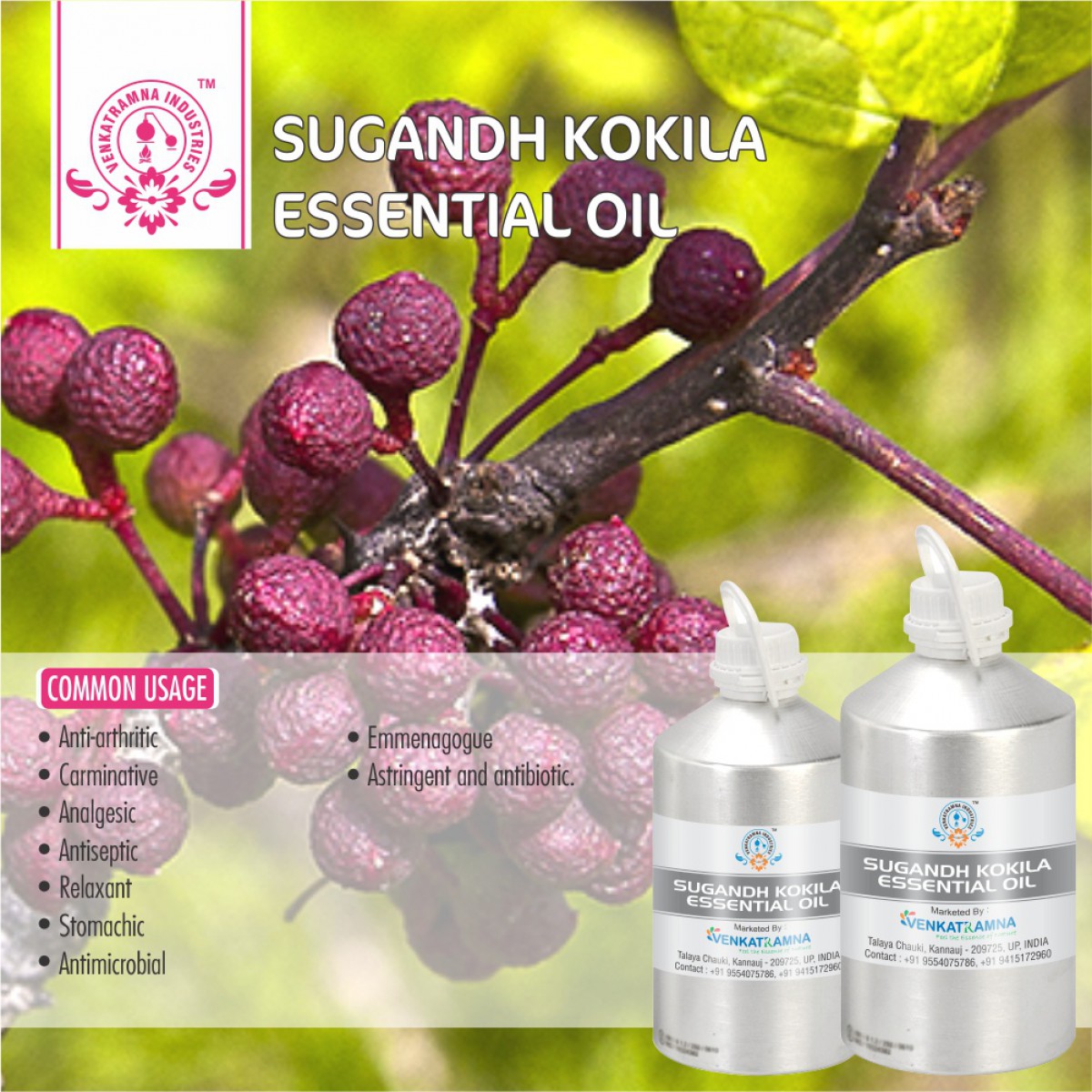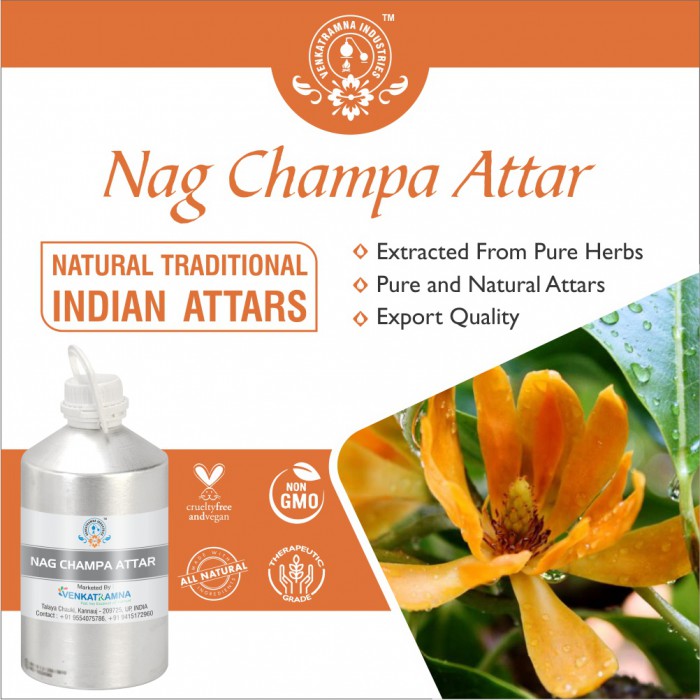Botanical Name: Cinnamomum cecidodaphne Common name: Sugandh Kokila Read More
|
Botanical Name: |
Cinnamomum
cecidodaphne |
|
Common name: |
Sugandh Kokila |
|
Plant
family: |
Lauraceae |
|
Genus: |
Cinnmomum |
|
Appearance/Color: |
A thin, yellow
to golden liquid. |
|
Odor: |
A middle note with a medium
aroma, Sugandh Kokila has a very distinctive scent that is spicy and
camphoraceous. |
|
Blends With: |
Lavender
and Juniper Berry |
|
Origin: |
Nepal |
|
Source: |
Fruits |
|
Method
of Extraction: |
Steam
Distillation |
Cinnamomum is a genus of evergreen aromatic trees and shrubs belonging to the laurel family, Lauraceae. The species of Cinnamomum have aromatic oils in their leaves and bark. The genus contains over 300 species, distributed in tropical and subtropical regions of North America, Central America, South America, Asia, Oceania, and Australasia. The genus includes a great number of economically important trees. The unique, rich, herbaceous, warm, camphoraceous and spicy aroma of Sugandha Kokila essential oil is extracted from the dried berries of this plant, scientifically known as Cinnamomum glaucescens is a member of the Lauraceae family. The ancient Ayurvedic texts recommend the use of this oil as a natural tonic for the digestive system and the central nervous system.
DISCLAIMER
The complete range of conditions
or methods of use are beyond our control therefore we do not assume any
responsibility and expressly disclaim any liability for any use of this
product. Information contained herein is believed to be true and accurate however,
all statements or suggestions are made without warranty, expressed or implied,
regarding accuracy of the information, the hazards connected with the use of
the material or the results to be obtained from the use thereof. Compliance
with all applicable federal, state, and local laws and local regulations
remains the responsibility of the user.
The FDA has not evaluated the
statements on this website. No claims are made by Venkatramna Industries as to
the medicinal value of any products from vriaroma.com or by us. The information
presented here is for educating our customers about the traditional uses of
essential oils and is not intended to diagnose, treat, cure, or prevent any
disease. You are responsible for understanding the safe application of these products.
If you have any questions, please call or email us for further information.
As per NAHA guidelines, New Directions Aromatics
(NDA) does not recommend the ingestion of essential oils. It is imperative to
consult a medical practitioner before using Essential Oils for therapeutic
purposes. Pregnant and nursing women and those taking prescription drugs are
especially advised not to use this product without the medical advice of a
physician. The oil should always be stored in an area that is inaccessible to
children, especially those under the age of 7.
The essential oil is widely used
in soap and incense industries to make the products. The ancient Ayurvedic
texts recommend the use of this oil as a natural tonic for the digestive system
and the central nervous system.
Sugandha Kokila essential oil
consists primarily of methyl cinnamate and 1,8 cineole; a beneficial germicidal
with antimicrobial, antiseptic, and antibacterial properties well suited for
massage oil blends targeting arthritic and rheumatic conditions. Its analgesic
effects are also beneficial in sports related massage for reducing pain and
inflammation in the muscles and joints while increasing circulation.
Some sources indicate Sugandha
Kokila essential oil is a possible emmenagogue, meaning it may have the ability
to provoke menstruation. For this reason, and without conclusive
evidence, we suggest erring on the side of caution and not use this oil if
pregnant.
Diffusing Sugandha Kokila into
the air (either by an oil diffuser or electric diffuser) may also be helpful
with respiratory infections, sinus conditions, and headaches.
Aromatically this oil combines
nicely with Lavender and Juniper Berry, anchored by Balsam of Peru with its
sweet vanilla like notes for an exotic sensual masculine perfume blend.
This is an oil to be creative with; our Nepalese distiller describes
Sugandha Kokila as "A Gift to Perfumers from the Himalayan Kingdom of
Nepal".
COMMON
USAGE
·
Anti-arthritic
·
Carminative
·
Analgesic
·
Antiseptic
·
Relaxant
·
Stomachic
·
Antimicrobial
·
Emmenagogue
·
Astringent and antibiotic
Ingredients:
|
S. No |
Key Constituents |
Strength (%) |
|
1 |
(E)-methyl cinnamate |
13.7 |
|
2 |
1,8-cineole |
13.1 |
|
3 |
b-caryophyllene |
7.4 |
|
4 |
a-terpineol |
6.6 |
|
5 |
a-copaene |
4.7 |
|
6 |
Terpinen-4-ol |
4.0 |
|
7 |
p-cymene |
3.6 |
|
8 |
d-cadinene |
2.9 |
|
9 |
linalool |
2.8 |
|
10 |
Lauric acid |
2.7 |
|
11 |
myristicin |
2.5 |
|
12 |
a-santalene |
2.1 |
|
13 |
2-nonanone |
1.9 |
|
14 |
b-pinene |
1.9 |
|
15 |
Camphor |
1.5 |
|
16 |
a-phrllandrene |
1.5 |
|
17 |
b-phellandrene |
1.4 |
|
18 |
a-caryophyllene |
1.3 |
|
19 |
Decanoic acid |
1.3 |
|
20 |
a-pinene |
1.2 |
|
21 |
b-bisabolene |
1.1 |
|
22 |
b-seliene |
1.0 |
|
23 |
Methyleugenol |
0.6 |
Safety Summary
·
Hazards Not Known
·
Contraindications: Not Known
Organ Specific Effects
·
Adverse skin reaction: No Information Found
·
Reproductive Toxicity: No Information
Found
Systemic Effects
·
Acute
Toxicity: No information
found.
·
Antioxidant/pro-oxidant activity: No Data Available
·
Carcinogenic/anti carcinogenic potential: No Data Available
Toxicity
·
Acute fish toxicity: LC50 / 96 HOUR – No
data available
·
Toxicity to aquatic plants – No data
available
·
Toxicity to microorganisms – No data
available
·
Toxicity threshold – No data available
· Persist





 MSDS-Sugandh.pdf
MSDS-Sugandh.pdf





J. west - 06 May 2022
Quality and delivery time is good. Will tell after using it.